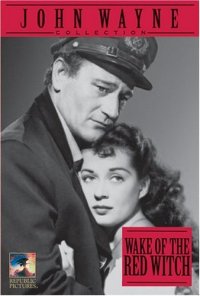Who Was/Is Lazarus Long?
You might wonder at the title of this blog - a blog I haven't spent much time on at all - and ask yourself, "Who the hell is Lazarus Long?" That's a good question!
Wikipedia puts it this way:
Lazarus Long is a fictional character featured in a number of science fiction novels by Robert A. Heinlein. Born in 1912 in the third generation of a long-life selective breeding experiment run by the Ira Howard Foundation, Lazarus (whose birth name is Woodrow Wilson Smith) turns out to be unusually long-lived, living well over two thousand years with the aid of occasional rejuvenation treatments.
His exact (natural) life span is never determined. In his introduction at the beginning of Methuselah's Children he guesses his age to be 213 years old. Approximately 75 years pass during the course of the novel, which ends with the first form of rejuvenation being developed. However, because large amounts of this time are spent traveling interstellar distances at speeds approaching that of light, the 75-year measurement is an expression of the time elapsed in his absence rather than how much time passed from his perspective. At one point, he estimates his natural life span to be around 250 years, but this figure is not expressed with certainty. Heinlein acknowledged that such a long life span should not be expected as a result of a mere three generations of selective breeding, but offers no alternative explanation except for letting a character declare, "A mutation, of course—which simply says that we don't know".
To my way of thinking, as a reader of the works of Science Fiction Giant Robert A. Heinlein, Lazarus Long was something of an alter-ego of Heinlein's. Beginning with "Methusleah's Children, Heinlein used the Lazarus Long character in five of his novels. Long also appears, in differing guises, in many of Heinlein's short stories.
Writers often use their characters to let out some of their own hidden thoughts and feelings, their loves and hates, their dark sides that they would not reveal in public. I think Lazarus Long became just such a tool for Heinlein.
So popular a fictional character is Lazarus Long among Heinlein afficianados that "The Notebooks of Lazarus Long" was published (1978), filled with Long's catch-phrases and opinions. You can almost see Heinlein peeking around the edges of the pages as you read them. Some are funny, some make you shake your head, and others get you thinking. A few of them:
Always store beer in a dark place.
By the data to date, there is only one animal in the Galaxy dangerous to man--man himself. So he must supply his own indispensable competition. He has no enemy to help him.
Men are more sentimental than women. It blurs their thinking.
Certainly the game is rigged. Don’t let that stop you; if you don’t bet, you can’t win.
Any priest or shaman must be presumed guilty until proved innocent.
Always listen to experts. They’ll tell you what can’t be done and why. Then do it!
Get a shot off fast. This upsets him long enough to let you make your second shot perfect.
Lazarus Long is an exciting, fun, manly, flawed character, long-in-tooth, ever a naughty boy, and forever bound by his own personal code of honor and decorum. And I think Heinlein lived a little through Long's character.
In any event, Lazarus Long, flaws and all, is one of my favorite fictional characters. Why not pick up a copy of Heinlein's works and see how much fun Science Fiction can be in the hands of a Master?
Note: Jerry Parker has an interesting article on Lazarus Long here. He finishes the article by saying,
"It is clear that Robert Heinlein loved this character and enjoyed manipulating him, just as Lazarus enjoys manipulating those around him. Just how much of Heinlein is actually embedded in Lazarus we'll never know. I believe that, in "The Tale of the Twins That Weren't" and "The Tale of The Adopted Daughter," stories contained within Time Enough For Love, and which deal with defining love, we see an attitude towards love of one's fellow man that is more Heinlein than invented. As for me, Lazarus Long lives and strides between the stars. Supreme in the knowledge that life can end at any moment, he shouts, 'Everything in excess! To enjoy the flavor of life, take big bites. Moderation is for monks.'"
Lazarus Long Books at Library Thing














